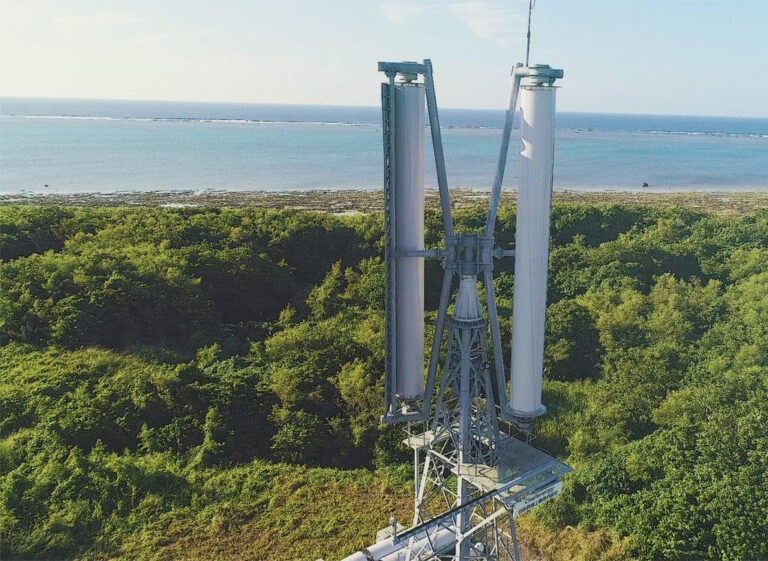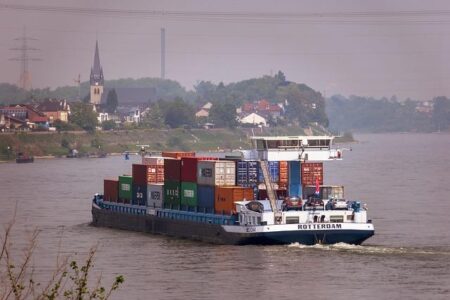China is pioneering a new generation of offshore wind farms designed to withstand the region’s most severe typhoons, marking a significant advancement in renewable energy technology. As the country rapidly expands its clean energy capacity, these “typhoon-proof” wind farms along the eastern coast are set to play a crucial role in stabilizing power supply while tackling the challenges posed by extreme weather. This innovative approach not only reinforces China’s commitment to reducing carbon emissions but also sets a potential blueprint for other typhoon-prone regions worldwide.
Typhoon Resilience Engineering Behind China’s Coastal Wind Farms
China’s coastal wind farms have been redesigned to withstand the region’s notorious typhoons, employing cutting-edge engineering principles that push the limits of renewable energy resilience. Utilizing reinforced turbine towers crafted from high-strength steel alloys and advanced composite materials, these structures can endure wind speeds exceeding 200 km/h without compromising performance. Foundation designs incorporate deep-pile anchoring techniques that stabilize turbines against the violent shaking and soil erosion induced by severe storms.
Innovative features that enhance durability include:
- Aerodynamic blade shapes: Minimize drag and reduce mechanical stress during peak wind gusts.
- Smart blade pitch control systems: Automatically adjust angles to mitigate damage by redirecting aerodynamic loads.
- Real-time structural health monitoring: Sensors relay data allowing operators to take preventative action ahead of extreme weather events.
| Engineering Aspect | Key Features | Benefit |
|---|---|---|
| Tower Construction | High-strength steel, composite coatings | Resistance to bending and corrosion |
| Blade Design | Aerodynamic curvature, pitch control | Reduced mechanical failure risk |
| Monitoring System | Real-time sensors, predictive analytics | Proactive maintenance scheduling |
Innovative Technology Driving Sustainable Energy Amid Extreme Weather
As climate change escalates the frequency of severe weather events, engineers along China’s eastern seaboard have pioneered wind farm designs that can withstand the fiercest typhoons. These typhoon-resistant turbines incorporate reinforced blades, flexible towers, and advanced sensors that adapt in real-time to fluctuating wind speeds and directions. This innovative engineering not only safeguards critical infrastructure but also ensures a steady supply of clean energy, even during extreme storms. By maintaining operational stability under harsh conditions, these installations set a new benchmark for resilient renewable energy systems worldwide.
Key features driving this breakthrough include:
- Adaptive Blade Pitching: Blades automatically adjust angles to reduce stress during peak gusts.
- Flexible Tower Structures: Built to sway without damage, minimizing structural fatigue.
- Real-time Monitoring Systems: Sensors provide instant data for dynamic turbine adjustments.
| Parameter | Value | Benefit |
|---|---|---|
| Max Wind Speed Resistance | 70 m/s (252 km/h) | Typhoon survival |
| Blade Length | 80 meters | Higher energy capture |
| Operational Downtime | <2% | Consistent power supply |
Strategies for Expanding Wind Power Infrastructure in Typhoon-Prone Regions
Adapting wind power infrastructure to withstand the relentless force of typhoons requires not only advanced engineering but also a strategic approach to site selection and design. Coastal regions prone to severe storms are increasingly turning to reinforced turbine blades crafted from composite materials that offer greater flexibility and resistance. Elevated foundations and aerodynamic rotor shapes minimize wind resistance during peak gusts, drastically reducing the risk of structural failure. Additionally, integrating real-time monitoring systems enables operators to adjust blade angles proactively as storms approach, providing an agile defense that traditional turbines lack.
Beyond technological innovation, expanding wind farms in such volatile environments also depends on holistic planning that considers logistical and environmental factors. Key strategies include:
- Clustered layouts: Positioning turbines in staggered formations to reduce collective wind load
- Redundant power grids: Establishing backup connections to ensure energy stability if individual turbines go offline
- Rapid repair protocols: Pre-staging maintenance teams and equipment for immediate response post-typhoon
- Environmental buffers: Utilizing natural barriers such as mangroves to absorb storm surges
| Strategy | Benefit | Implementation Challenge |
|---|---|---|
| Reinforced Blade Materials | Improved durability | Higher initial costs |
| Real-time Monitoring | Proactive storm response | Complex data infrastructure |
| Clustered Layouts | Reduced wind load | Careful terrain analysis required |
| Mangrove Buffers | Natural surge protection | Environmental permitting |
Final Thoughts
As China continues to advance its renewable energy ambitions, the development of typhoon-resistant wind farms along its vulnerable eastern coastline marks a significant milestone. These robust installations not only promise a more reliable and sustainable power supply but also set a precedent for other regions facing extreme weather challenges. With climate change increasing the frequency and intensity of storms, innovations like these will be vital in securing the resilience of clean energy infrastructure worldwide.




